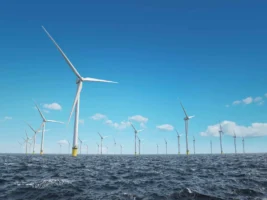The Australian Energy Market Operator has told owners of solar projects in western Victoria that the local grid is “balanced on a knife edge” and has warned of further delays in connection of new solar farms in the region.
Five operating solar farms – four in Victoria and one in NSW – have had their output curtailed by half since mid September after modelling revealed “system strength issues”, and the risk of severe “oscillation” in the event of a major network fault or outage.
The decision to curtail the solar farms has reduced available capacity by around 170MW, costing their owners a combined $1 million a day in lost revenue and depriving the state of a potentially valuable resource as the summer heat sets in.
But the spillover effects have extended elsewhere, with delays to the connection and commissioning of other new solar projects, including the 106MW Yatpool solar project, situated right next door to the Karadoc solar farm, one of the existing solar farms that has been heavily curtailed, and the bigger (256MW DC) Kiamal solar farm.
In a letter sent last week to solar farm owners and projects developers, and seen by RenewEconomy, AEMO’s head of energy system engineering Christian Schaefer warns that the issues being faced in the region are highly complex and “unique in the world” and he cannot predict when they will be resolved.
One near-term solution resides in changing the tuning of inverters in the solar farms – who all happen to use SMA inverters – but the complexity and the lack of suitable high-speed monitoring equipment in that part of the network, and the difficulty in aligning test windows, is causing delays
“At the time of writing, AEMO is unable to commit to a firm time for forming the tuning solution with the NSP’s (network service providers) and the five solar farms,” Schaefer wrote.
He said further checks and analysis would lead to further investigation and then to possible options for quantifying and “reducing the overall impact of current and future” stability constraints.
“To AEMO’s knowledge, the nature and extent of the issues seen in the West Murray zone and unprecedented in any power system, and we have some of the foremost experts in the world investigating them,” Shaefer wrote. He said the system is “balanced on a knife-edge.”
Finding a solution is likely to be a long, exhausting and costly process.
Moreover, any new projects will have to go through exhaustive “wide area” modelling before connection, and comprehensive guidelines will be published shortly. He said there are about 1,200MW of committed inverter-based projects in the zone, and about 3,000MW in the application phase, plus a growing amount of small-scale solar.
“This means that both higher connection standards and restricted operation are inevitable.”
In AEMO’s Electricity Statement of Opportunities published in August, Yatpool had been expected to be commissioned in November, but that was before the system strength issues were identified in early September. Its owners Bay-Wa could not be reached for comment.
Shaefer’s letter was sent on the same day as AEMO published proposals for a long-term solutions to the problems, a potential new link from NSW and Victoria, and a few days before it declared a “fault shortfall” which could lead to another medium-term solution, the installation of synchronous condensers at various points in the network.
One project that has already installed a large synchronous condenser, Kiamal, was due to be completed this year and would be the state’s largest, but it is not clear exactly what stage the solar project is at, nor if its syncon can assist the other existing solar projects, which include the Karadoc, Bannerton, Wemen and Gannawarra solar farms in Victoria, and the Broken Hill solar farm in NSW.
But Schaefer warned in his letter: “There are physical limits on the amount of system strength remediation that can be achieved by installing more synchronous condensers in the current network.” This means “deeper” connection works will be necessary, and these must be funded by connecting parties.
Even then, there were likely to be thermal constraints and decreasing marginal loss factors as more projects became committed, Schaefer warned. This will be the case until a new link, or upgrade, is approved and delivered – but that could be a decade away, with 2028/29 seen as the earliest possible deliver of a new link.
Solar project developers that RenewEconomy has spoken to say they understand the complexity and the depth of the problem, and appreciate AEMO’s efforts to resolve the issue.
But they do wonder how it came to this; how the system strength issues were only identified many months after most of the solar farms had begun generating. They are also seeking clarity about the future options, particularly in regard to the potential need to re-negotiate or adjust existing generating performance standards (GPS) crucial to their operation.









